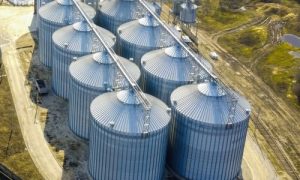UGS Installs Biogas Upgrading Systems In Michigan And Wisconsin: USA

Unconventional Gas Solutions has successfully commissioned two biogas upgrading plants in Michigan and Wisconsin, together supplying 800 Nm³/h of biomethane to the local gas grid. These innovative systems tackle high H2S concentrations (up to 30,000 ppm) without costly pre-treatment. By employing a multi-stage membrane process, they produce near-pure biomethane, meeting stringent grid requirements while enhancing efficiency and reducing CO2 emissions.
Unconventional Gas Solutions, a specialist in gas upgrading systems, announced the successful commissioning of two innovative biogas upgrading plants in Michigan and Wisconsin. The two plants, which together feed 800 Nm3/h of biomethane into the local gas grid, are the first UGS systems of their kind.
The projects were particularly challenging due to the change in operating procedures and the high grid requirements. The first commissioning, the Three Petals RNG plant in Berlin, Wisconsin, was followed by the second: the Red Leaf RNG plant at the Maple Row Dairy Farm in Saranac, Michigan.
In cooperation with the project developer Novilla RNG, UGS played a decisive role in the development, commissioning and optimization of the systems. The specialist is thus setting a new benchmark in the treatment of biogas: when high H2S concentrations occur, operators normally have to pre-treat the biogas with costly additives or install an expensive external desulphurization system for the entire biogas volume.
This reduces the H2S load to levels that can be handled by an activated carbon filter. However, this approach is often accompanied by a decisive disadvantage: The need for such systems to increase oxygen addition; the additional oxygen can also affect the product gas quality. At the sites in Berlin and Saranac, however, those responsible decided to bypass this complex process.
Both plants process H2S concentrations of more than 4,000 ppm, which are sent directly into the compressor of the gas treatment plant and then directly through the first membrane stage. Instead of focusing on protecting the membrane treatment system, Novilla and UGS opted for an unconventional approach: the system uses a multi-stage, membrane-based treatment process that tolerates very high H2S concentrations of up to 30,000 ppm.
In the first membrane stage, H2S and CO2 are separated simultaneously and fed into the exhaust gas. This means that no upstream costly process is required to reduce the H2S load. For optimum methane yield, the permeate from the subsequent stage is fed back into the process.
The result is almost pure biomethane in natural gas quality with only a residual H2S content. The low concentration in the reduced volume flow on the product gas side is then separated in a fine desulphurization process using an iron sponge reaction bed.
Similar to the known activated carbon filters, these vessels are arranged in a lead-lag configuration. This allows the loaded material to be renewed during operation. Another positive side effect of this H2S-binding reaction is the consumption of residual oxygen.
The by-product of the reaction is water, which must be removed using a TSA dryer system developed by UGS. Ultimately, this process reduces the volume of gas to be cleaned of H2S and avoids the accumulation of O2 or N2, as would be necessary with upstream H2S treatment.
Another argument in favor of the selected system in the Red Leaf RNG plant was the strict grid requirements in Michigan, where an O2 content of 5 ppm must not be exceeded. In order to guarantee these extreme limit values in every situation, the catalytic deoxidation system (DeOxo) developed by UGS was installed after the fine desulphurization of the product gas.
“Remarkably, the desulphurization via the membrane unit itself, followed by the fine desulphurization on the product gas side, means that the grid specifications can sometimes even be met without using the De-Oxo system. However, the DeOxo system offers absolute safety for all our sites”, emphasizes Mark Hill, Co-CEO of Novilla RNG.
The new pricing systems that valorize biomethane produced from manure and waste have contributed to the reduction of CO2 emissions and have significantly changed biogas qualities. Today, biogas upgrading plants must be able to cope with significant fluctuations in gas composition, large amounts of pollutants such as H2S above 5,000 ppm and changing O2 and N2 concentrations. These developments are forcing industry to develop new solutions. Due to its high level of expertise in unconventional gas purification, UGS is in a position to technologically overcome these complex challenges.
“We have innovative solutions that can fill critical niches in this market. UGS offers systems manufactured both in the USA and in Europe, ensuring innovative solutions for the upcoming market requirements,” emphasizes Ben Bikson, CTO of UGS LLC.

















